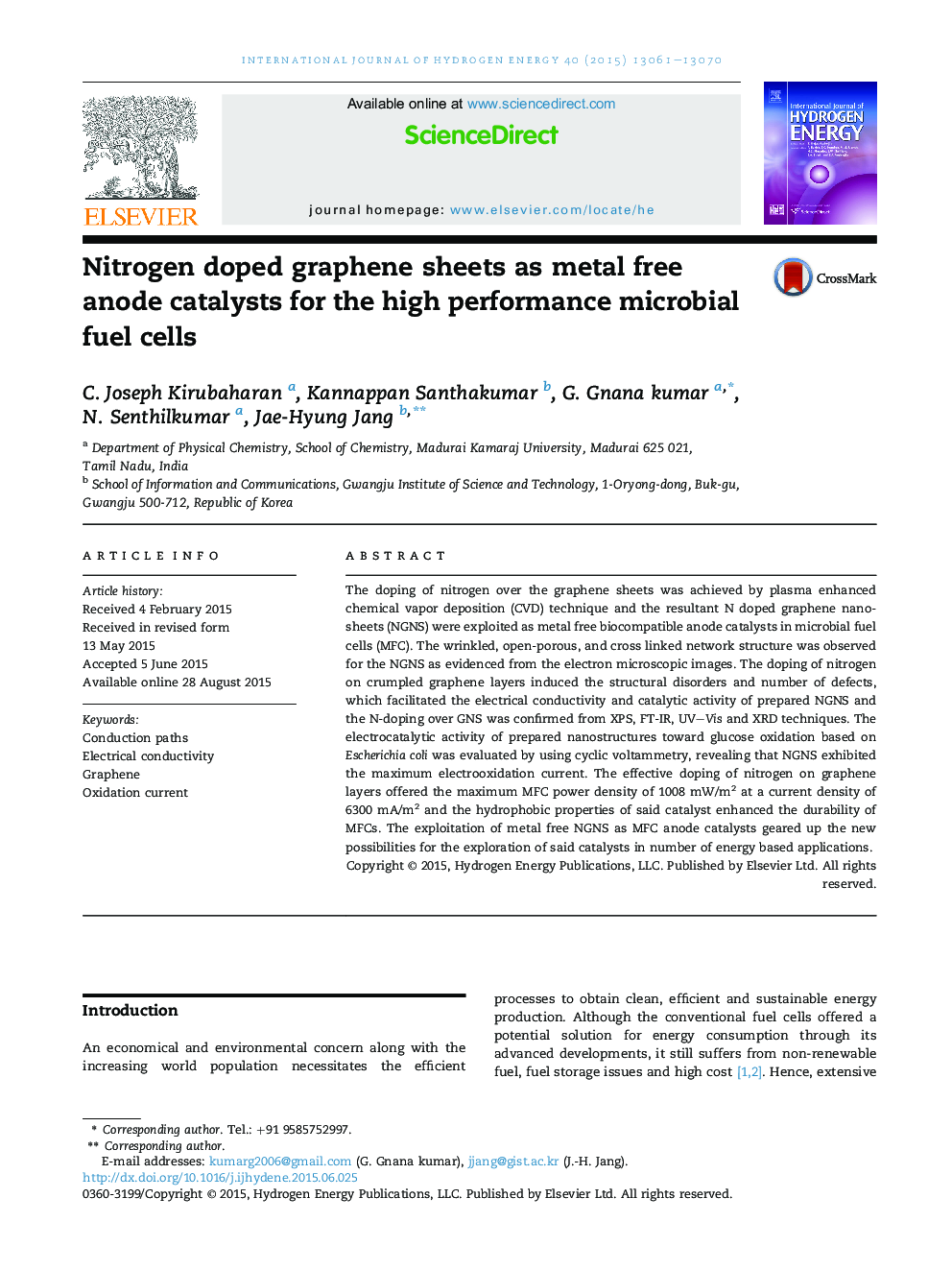| Article ID | Journal | Published Year | Pages | File Type |
|---|---|---|---|---|
| 1269222 | International Journal of Hydrogen Energy | 2015 | 10 Pages |
•Nitrogen was effectively doped over the surface of graphene sheets.•P-type doping facilitated the delocalization of positive charges in NGNS.•NGNS's porous network structures enhanced the electrogenic bacterial attachment.•Electrostatic interaction of NGNS with microbes promoted direct electron transfer.•Hydrophobic properties of NGNS promoted the MFC durability performances.
The doping of nitrogen over the graphene sheets was achieved by plasma enhanced chemical vapor deposition (CVD) technique and the resultant N doped graphene nanosheets (NGNS) were exploited as metal free biocompatible anode catalysts in microbial fuel cells (MFC). The wrinkled, open-porous, and cross linked network structure was observed for the NGNS as evidenced from the electron microscopic images. The doping of nitrogen on crumpled graphene layers induced the structural disorders and number of defects, which facilitated the electrical conductivity and catalytic activity of prepared NGNS and the N-doping over GNS was confirmed from XPS, FT-IR, UV–Vis and XRD techniques. The electrocatalytic activity of prepared nanostructures toward glucose oxidation based on Escherichia coli was evaluated by using cyclic voltammetry, revealing that NGNS exhibited the maximum electrooxidation current. The effective doping of nitrogen on graphene layers offered the maximum MFC power density of 1008 mW/m2 at a current density of 6300 mA/m2 and the hydrophobic properties of said catalyst enhanced the durability of MFCs. The exploitation of metal free NGNS as MFC anode catalysts geared up the new possibilities for the exploration of said catalysts in number of energy based applications.
Graphical abstractFigure optionsDownload full-size imageDownload as PowerPoint slide
